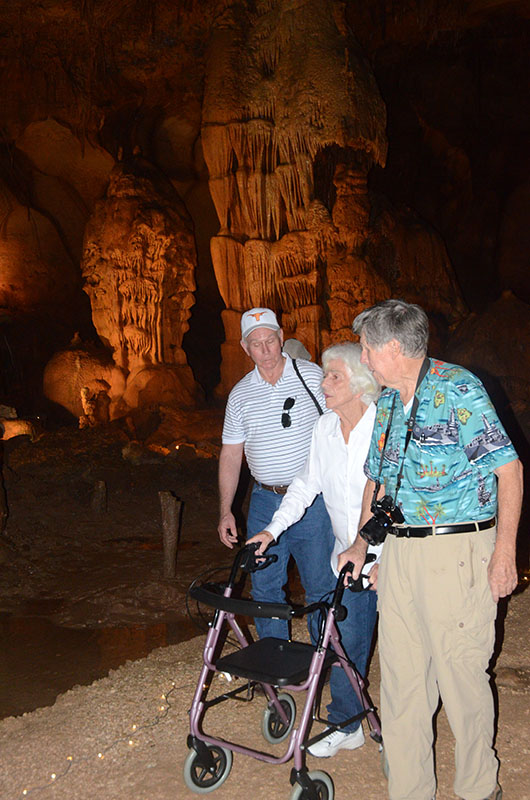
Mary McGrath Curry revisits the Texas cave she discovered in the 1930s. Photo by Phil Houseal
Aug 19, 2015–They found the sheep.
They also discovered one of the most beautiful caves in the world.
Mary McGrath Curry was around 6 years old when she and her two brothers, Harold and Jimmy, set off on their journey toward the center of the Earth. She is now 86 and lives in Wasilla, Alaska.
“We were very adventurous children,” she said. Curry called after she saw my last column about how current owner Tom Summers is hosting concerts in Cave Without A Name, just north of Boerne, Texas.
She shared her story about finding the cave that day in 1935: As they searched for the lost sheep, they first stumbled upon a moonshine still sitting beside a hole in the ground, evidence bootleggers knew about this hidey-hole long before. The resourceful kids tied knots in a rope and anchored it to an oak tree. They clambered down the rope to the first of three ledges. There they found three old wooden ladders that each led to a lower level. When they reached the bottom level, they crawled to the right.
“We saw a massive room with beautiful stalagmites and stalactites,” Curry said, her voice still tinged with wonder 80 years later. “There was an ethereal light there, so it was bright inside the cave. I remember wandering to the left, where there was a stream running through it.”
For a moment, the kids considered swimming to see where it led. However, realizing it could go on a mile underground, they wisely stayed out of the water.
Curry and her brothers kept the knowledge of the cave a family secret at first. She just considered it another “adventure” during their summers in the Kreutzberg area. Their father worked at Fort Sam Houston. The family spent every summer staying in the country, with her brothers attending a different trade school so they would have marketable skills, and all the kids could “learn to exist with no amenities.”
The training paid off, because Curry went on to a remarkable career, leading to other monumental discoveries. She attended school at Our Lady of the Lake, majoring in English and Mathematics. She married, and moved to California in the late 1950s, where she worked on the very first U.S. space flight that carried Alan Shepard.
“I was a ‘hand mathematician,’” she said. “I would sit there with a slide rule and formulas and calculate trajectories.” Her precision was so great, the capsule splashed down only two-tenths of a mile from where she calculated it would hit.
Despite her ability and the excitement of working on a then-secret mission to the moon, by 1962 she had her fifth of seven children and decided it was time to quit the space program. She moved to Alaska.
The last time Curry visited her cave was in the 1990s. She was trying to retrace her steps to the old farm, and took her nieces into the cave. She admits it made her “kind of disappointed” as she was still carrying her memory of what it looked like when she was a child.
“It wasn’t the magical spot it had been when we found it,” she said. “Progress needs to happen but sometimes it is disappointing. It was a pristine place; no human beings had touched anything. It was a wonderful experience, and one that I remember quite well.”
But she is glad the world can see the wonder that she discovered, and was gratified to be named an Honorary Caver.
I asked if she would have crawled into that first cramped Mercury space capsule. Her answer should be no surprise.
“I would have,” she said immediately. “I had no fear. The fear of going up and landing didn’t enter my mind. I thought it would be a great experience.”
That sense of adventure is what drove her.
“I describe things as being adventurous and fun,” she said. “Where ever my brothers went, I had to go. If they climbed a tree, I had to climb higher. I have to say I had a wonderful time growing up. I look at teens today and the problems they have, and I think, that’s sad. They should be living their lives and stop trying to grow up so fast.”
From uncovering a mystery under the ground to unraveling the secrets of earth orbit, her spirit of adventure has yet to end. Curry just learned she will be enshrined on the Wall of Honor at the Smithsonian Air & Space Museum in Washington, D.C.
Quite a destination for a journey that started 90 feet underground.
Details:
For information on Cave Without A Name, go to www.cavewithoutaname.com.
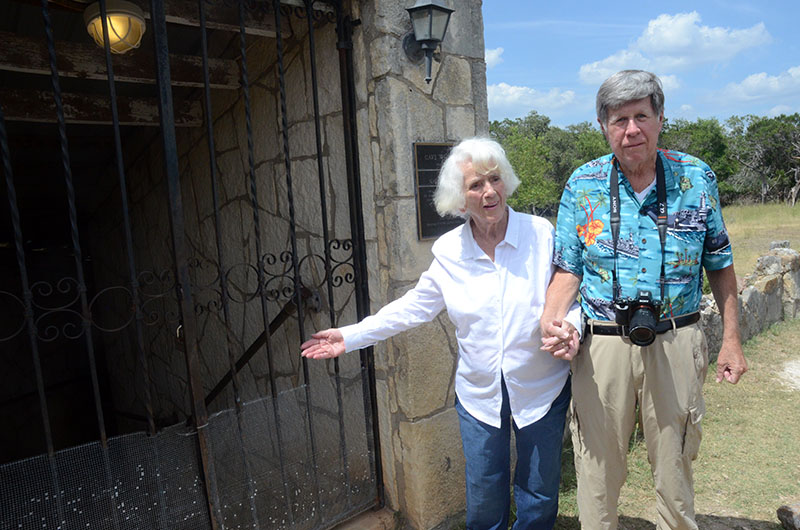
Mary McGrath Curry at the entrance of Cave-Without-A-Name that she discovered as a young girl in the 1930s. With current cave owner Tom Summers. Photo by Phil Houseal
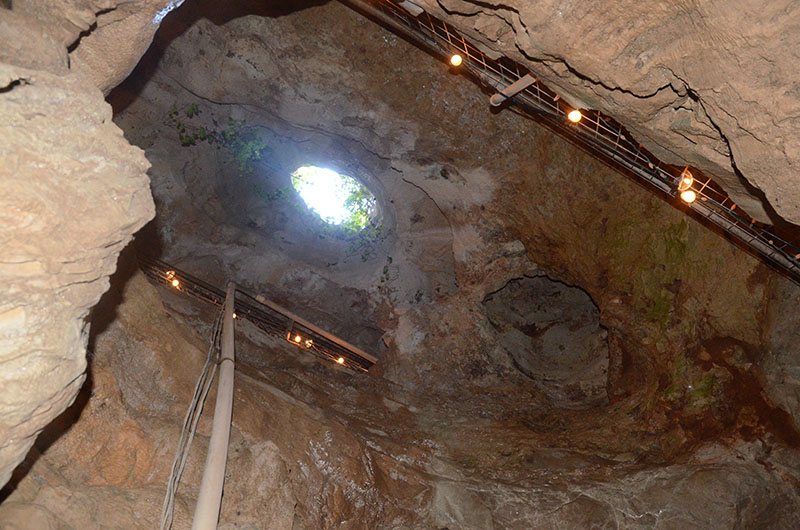
View of the small original entrance where the sheep fell in. Photo by Phil Houseal
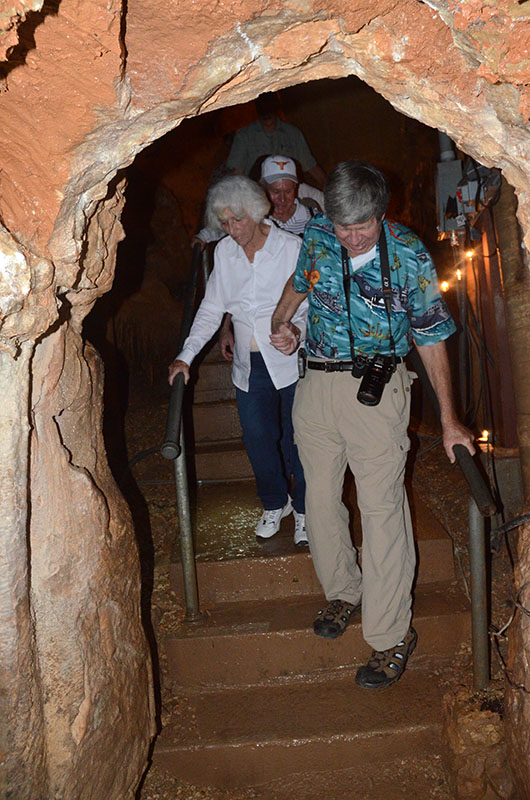
Climbing down the last of 126 steps to the cave entrance. Photo by Phil Houseal
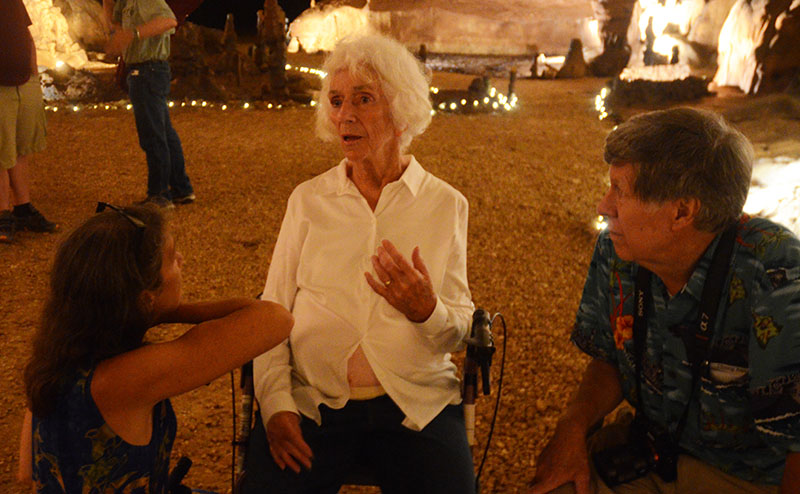
Mary McGrath Curry inside the cave she discovered. Photo by Phil Houseal